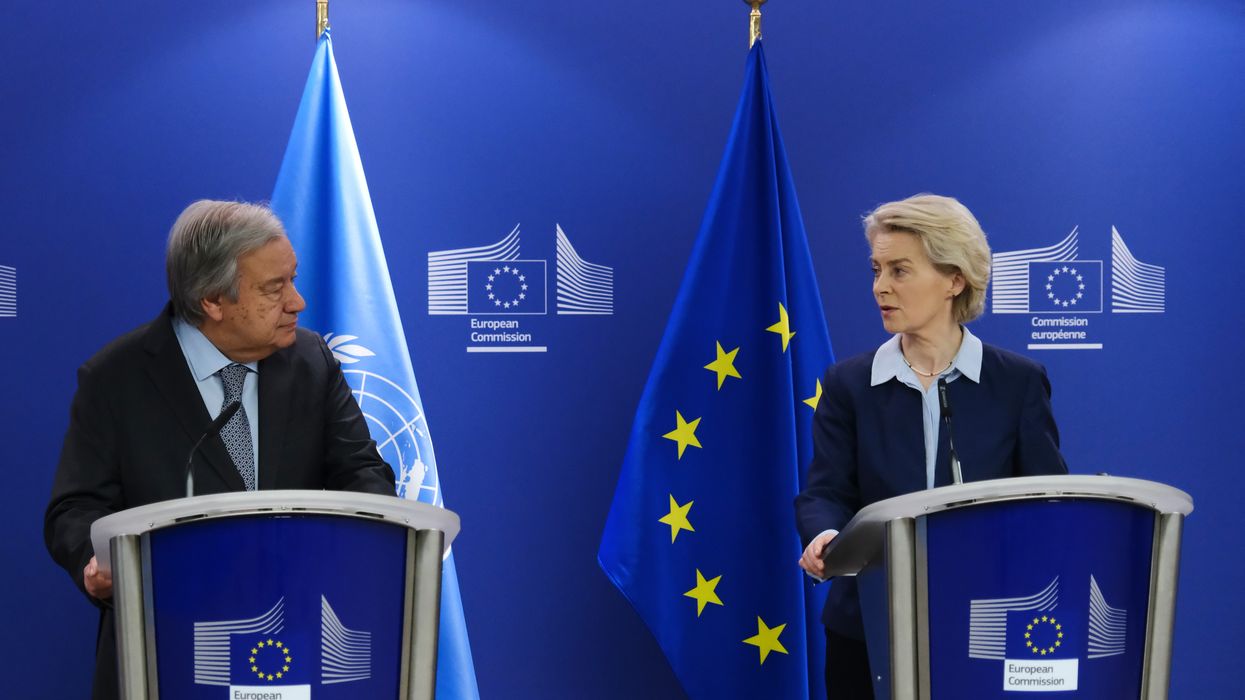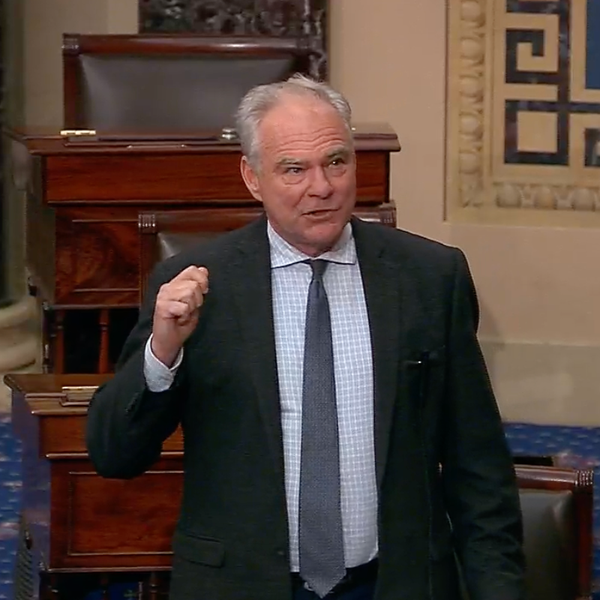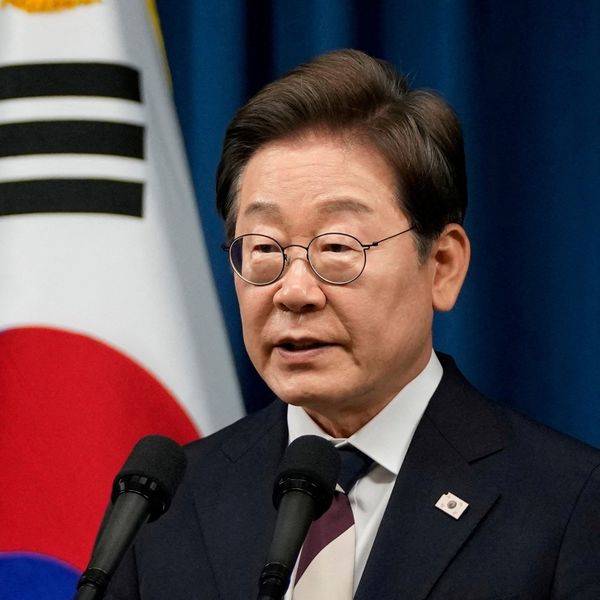For a moment, it seemed there was a light at the end of Israel’s political tunnel. Although Benny Gantz’s Blue and White party won fewer Knesset seats in the March 3 election than Benjamin Netanyahu’s Likud party, sheer hatred of Netanyahu drove his former ally, the right-wing Avigdor Liberman, toward Gantz’s camp and what seemed like a narrow majority of support for a new government.
The idea was that Blue and White, with 33 seats, would create a coalition with the Labor-Gesher-Meretz center-left bloc (seven seats) and Liberman’s Yisrael Beiteinu party (seven seats) and get support “from the outside”— the Joint List, the mostly Palestinian bloc of parties which won a remarkable 15 seats. With Netanyahu’s coalition yielding only 58 seats, all Gantz would need is one more than that to form a government, under Israel’s parliamentary rules. It would be a highly unstable government, but it would at least avert yet another election on top of the three Israel has held in the last year. And it would augur Netanyahu’s long-awaited departure from the Prime Minister’s Office.
The Balad party, part of the Joint List, won three seats and has said it would not support either Gantz or Netanyahu. Since Netanyahu’s bloc numbers 58 seats, Gantz could win with a plurality of 59 even if Balad abstains. But they could afford no more defections.
That plan was thrown into disarray when two members of Blue and White — Yoaz Hendel and Zvi Hauser — declared that they would not vote for a government that depended on the support of the Joint List. Orly Levy-Abekasis, the leader of the Gesher party, made a similar statement. What explains the three parliamentarians’ decision? Racism, pure and simple.
These three parliamentarians would not even sit in a government that was simply being sustained by votes from outside of the governing coalition that came from Arab parties. They would rather see a prime minister facing indictment for fraud and breach of public trust continue in office. That is not a small amount of racism, and, we must remind ourselves, this comes from the so-called “center-left” coalition. In reality, Hendel and Hauser are both members of the Telem party of Netanyahu’s former Defense Minister, Moshe Ya’alon, a party most charitably called center-right. Levy-Abekasis formed Gesher after leaving Liberman’s right-wing party.
The defections highlight the weakness of Gantz’s coalition. It spans the Zionist left party, Meretz, several centrist and center-right parties and some that are barely closer to the center than Likud. It is united only in its desire to see the end of Netanyahu’s time in office. While Hendel, Hauser, and Levy-Abekasis are the most strident about refusing any sort of cooperation with the Joint List, Gantz himself marked the number of Palestinians he has killed as a point of pride and amassing support throughout his campaign. His partner in Blue and White, Yair Lapid of the Yesh Atid party, bluntly swore in September that Blue and White would not form a government with “the Arabs.”
Faced with the choice of accepting Joint List support or yet another election, Lapid backtracked, saying, “If we don’t have anyone to form a unity government with what do we have left? Just two options. One difficult. The other a calamity.” The calamity is a fourth election, the difficult option working with the Joint List.
Is a fourth election inevitable?
While a fourth election seems to be the most likely outcome, there is a possibility it can still be avoided. One scenario that seems to be completely out of the question is that Netanyahu will have the votes to establish a government. The 58 seats he commands would not win a plurality in the Knesset unless MKs like Hauser, Hendel, and Levy-Abekasis defect from their parties and join one in Netanyahu’s coalition. That seems highly unlikely, although Levy-Abekasis has done it before and paid the price. Netanyahu has, in fact, already tried to lure some MKs to his side, and failed.
Gantz is trying to convince the Balad party to support his bid, and there is reason to believe he could succeed. Balad is demanding, among other things, that Gantz promise to refrain from annexing settlements, changing the status quo on the Temple Mount or taking similar, unilateral steps outside of negotiations with the Palestinians. Their demands are rather moderate, ones that would be very much in the interest of any Israeli government that wanted to rekindle talks with the Palestinian Authority, although Gantz has already made it clear that annexation is part of his agenda.
Balad’s support, if Gantz can get it, would mean that Gantz would have the plurality he needs to form a government and show Netanyahu the door. The government would be fragile, and would be particularly strained because it would need the ongoing support of the Joint List and Liberman, and those two forces would be pulling in opposite directions on a number of issues, particularly those that deal with the occupation of the West Bank and the siege of the Gaza Strip. But it would mean the end of Netanyahu’s long rule and would make it impossible for him to dodge the looming indictment and trial for crimes he is very likely to be convicted for.
The rise of the Joint List
With fifteen seats, the Joint List has made a real impact on the Israeli political scene. The last time an Israeli prime minister needed and received support from the Arab parties in forming a government was Yitzhak Rabin in 1992. For better or worse, that enabled Rabin to pursue the Oslo Accords and dramatically shifted the terms of the occupation.
The Joint List today represents the only true alternative in Israeli politics. This is part of the reason the List attracted a surprisingly large number of Jewish votes in this election. In September, some 9,000 Jewish voters cast their ballots for the Joint List. This time, that number more than doubled to around 20,000. That’s still a tiny minority of Jewish voters, but it indicates the growing dissatisfaction of progressive Israeli voters with their lack of options.
More importantly, the Joint List’s success is laying bare the blatant racism within Israel against its Palestinian citizens. Attempting to claim victory after the election, Netanyahu said, “The right-wing Zionist camp has 58 seats, while the left-wing Zionist camp and Liberman have 47 seats. The Joint List, which disparages IDF troops and opposes the state, doesn’t count.” Netanyahu’s statement belied the Israeli claim that Palestinian citizens have equal rights, as he made it clear that they can vote, but their representation is ephemeral. When that is the claim of the prime minister, what more need be said?
If Gantz does replace Netanyahu because of the Joint List’s support, it is something Palestinian citizens of Israel and the Israeli left can build on. It’s a move toward a genuine democracy in Israel that has never been seen before. And, ultimately, if there is to be a more peaceful and just future for Israelis and Palestinians, it is a shift the United States and others around the world need to support.















